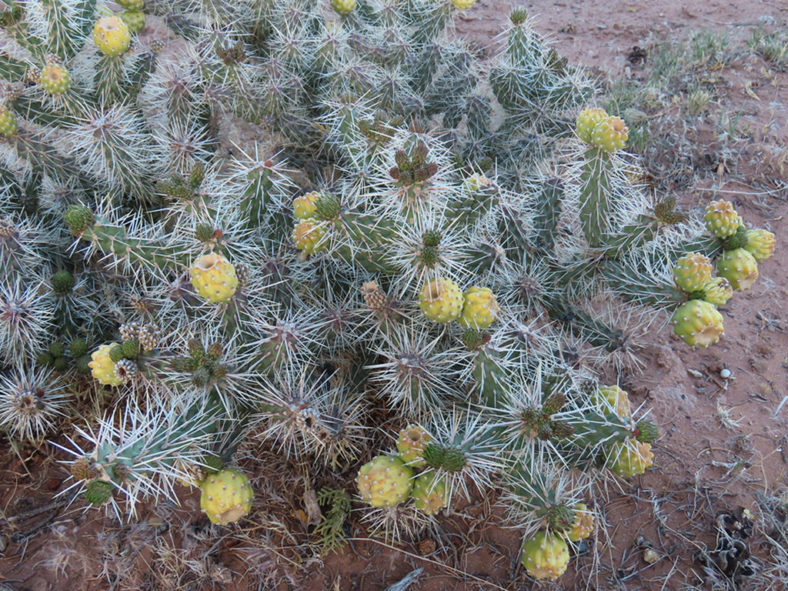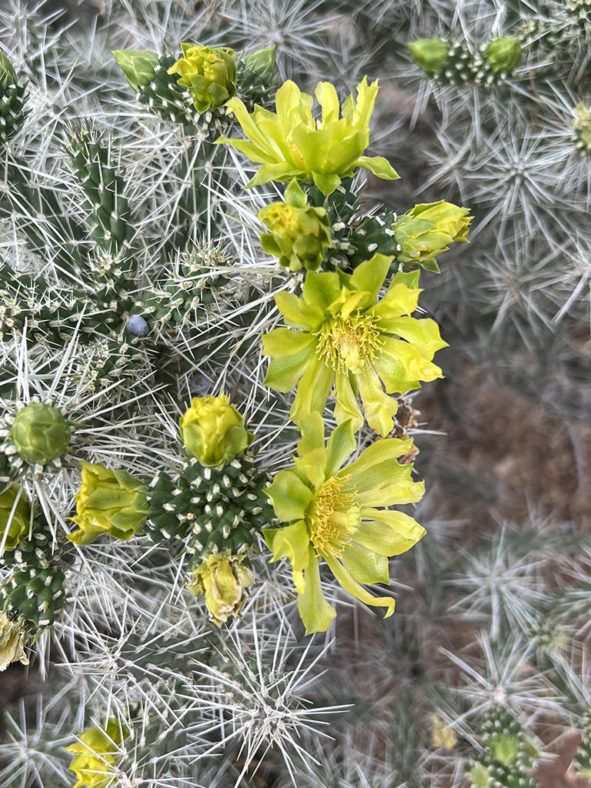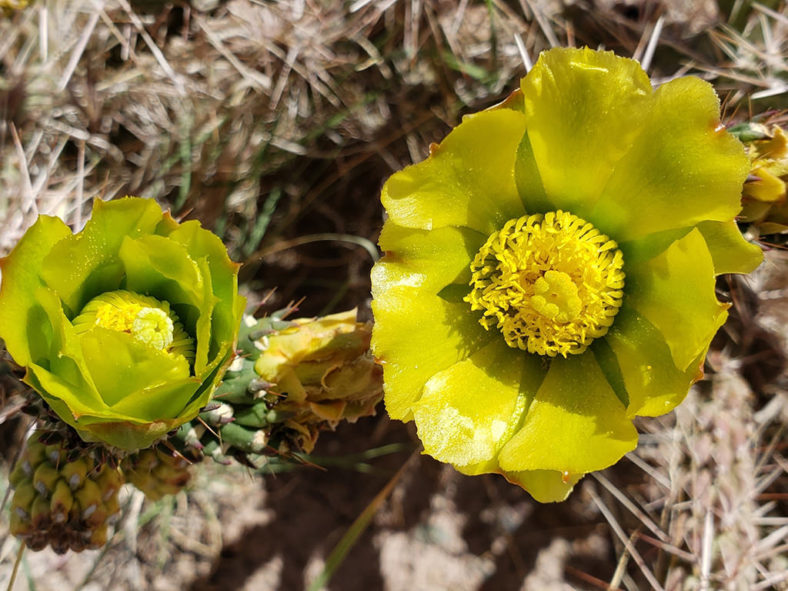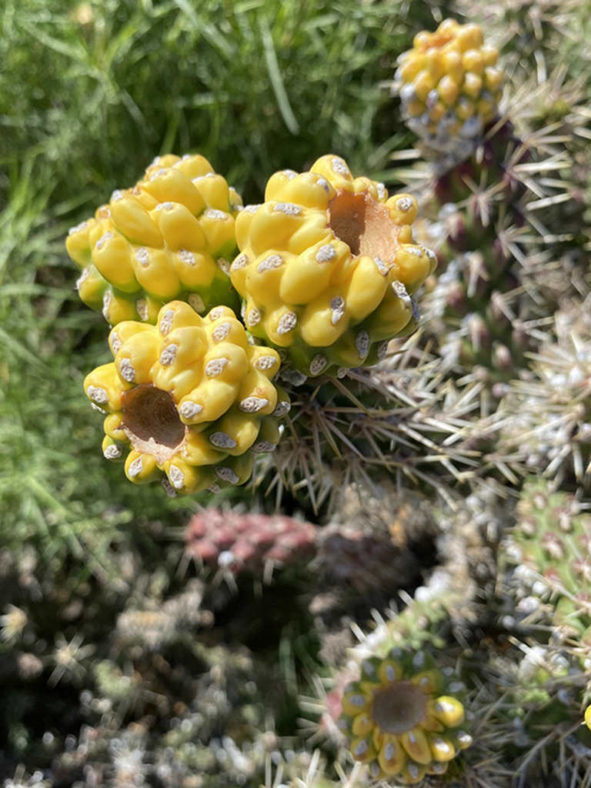Scientific Name
Cylindropuntia whipplei (Engelm. & Bigelow) F.M.Knuth
Common Name(s)
Clokey Cholla, Plateau Cholla, Rattail Cholla, Whipple Cactus, Whipple Cholla, Whipple's Cactus, Whipple's Cholla
Synonym(s)
Cylindropuntia whipplei var. enodis, Grusonia whipplei, Opuntia whipplei, Opuntia whipplei var. enodis
Scientific Classification
Family: Cactaceae
Subfamily: Opuntioideae
Tribe: Cylindropuntieae
Genus: Cylindropuntia
Etymology
The specific epithet "whipplei (WHIP-lee-eye)" honors Amiel Weeks Whipple (1817-1863), an American military officer and topographical engineer.
Origin
Cylindropuntia whipplei is native to the United States. It occurs from Nevada to southern Utah and northern Arizona into southwestern Colorado and northwestern New Mexico. This plant grows in desert grasslands, juniper-pinyon woodlands, oak and pine forests, and sagebrush scrub at elevations ranging from 2,950 to 7,545 feet (900 to 2,300 m).
Description
Cylindropuntia whipplei is a branched cactus with green or sometimes purplish-green, firmly attached stem segments with distinct tubercles and wooly areoles with clusters of white, yellow, or pale red-brown spines. It can reach up to 5 feet (1.5 m) in height and usually grows as an upright shrub with many stems branching from a woody central trunk. However, this species also has a low-growing form with shorter stems that stay close to the ground. The stem segments can grow up to 6 inches (15 cm) long and up to 0.9 inches (2.2 cm) in diameter. The spines are stout and can grow up to 1.8 inches (4.5 cm) long. Each areole bears 1 to 10, usually 3 to 8 spines.
The flowers are yellow to greenish-yellow and appear from late spring to early summer. They can reach up to 1.2 inches (3 cm) in diameter. The fruits are spineless, broadly cylindrical to nearly spherical, with prominent tubercules and areoles, and can grow up to 1.4 inches (3.5 cm) long and 1.3 inches (3.2 cm) in diameter. They are fleshy, yellow to greenish-yellow, and contain pale yellow seeds.

How to Grow and Care for Cylindropuntia whipplei
Light: C. whipplei thrives in full sun. Indoors, a window with access to sunlight for 6 hours a day works best. Some shade during midday and afternoon can prevent sunburn in very hot climates.
Soil: This cactus requires a well-draining soil mix. It prefers sandy or gravelly soil but can tolerate other soil types with good drainage. Use a commercial cactus potting mix, or create your own.
Temperature: Although this cactus is highly tolerant of high temperatures, it prefers cooler temperatures in winter. C. whipplei can withstand temperatures as low as 10 °F (-12.2 °C). USDA Plant Hardiness Zones 8a to 10b, 10 to 40 °F (-12.2 to 4.4 °C).
Watering: From spring to fall, water moderately and let the soil dry out completely before watering again. In most areas, rainfall will be enough for established plants. For a potted plant, never let the container sit in water. Suspend watering in winter.
Fertilizing: C. whipplei does not need fertilizer when planted in the ground. However, if grown in a container, it will benefit from fertilizing during the growing season. Apply a water-soluble fertilizer. Suspend feeding during the winter when the plant goes dormant.
Repotting: Repot only when your C. whipplei becomes potbound or is too large and unstable in its container. Choose a slightly larger container with drainage holes at the bottom. The best time for repotting is late winter or early spring.
Propagation: You can propagate C. whipplei by cuttings (stem segments) or seeds. Starting this cactus from seeds is a slow process, and it may take 3 to 4 years before you have a sizeable plant. Propagation by stem segments is the easiest method and yields faster results. The best time to take cuttings is early summer. Sow the seeds in late spring.
Learn more at How to Grow and Care for Opuntia.
Toxicity of Cylindropuntia whipplei
C. whipplei is not toxic to humans or pets. However, keep it away from pets and children as it has glochids that may cause moderate skin irritation.
Links
- Back to genus Cylindropuntia
- Succupedia: Browse succulents by Scientific Name, Common Name, Genus, Family, USDA Hardiness Zone, Origin, or cacti by Genus
Photo Gallery
Click on a photo to see a larger version.


